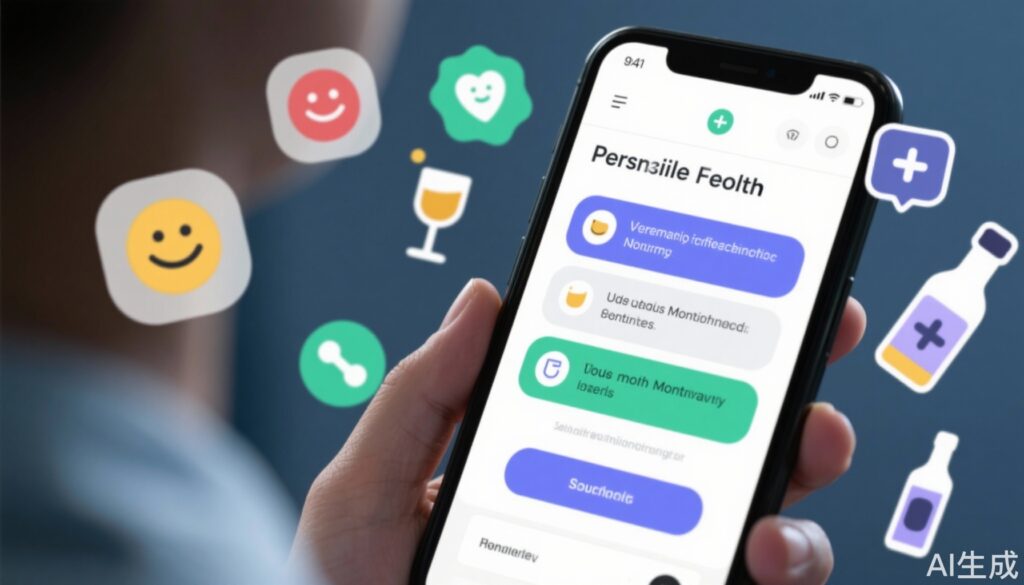Highlight
- A proactive e-health intervention reaches 51% of eligible patients with co-occurring at-risk alcohol use and depressive symptoms.
- High adherence observed with 73% of intervention participants receiving all components over six months.
- Small, statistically non-significant reductions in a composite alcohol-depression measure noted at 6 and 12 months, with no effect at 24 months.
- Potential greater benefit for participants without baseline major depression suggests effect modification.
Study Background and Disease Burden
Co-occurring at-risk alcohol use and depressive symptoms represent a common and clinically challenging comorbidity. Alcohol misuse adversely impacts mental health outcomes, complicates treatment, and increases healthcare utilization. Traditional treatment approaches often fail to engage patients in combined care for these intertwined conditions. Digital health (e-health) interventions offer promise due to scalability, accessibility, and the potential to provide proactive, tailored support with minimal resources. However, evidence on their long-term effectiveness and reach in clinical populations remains limited. This randomized controlled trial (RCT) evaluated a proactive e-health program—the Intervention for at-risk alcohol use and depressive symptoms (ITE)—targeting German medical care patients with these co-occurring conditions, focusing on reach, adherence, and effects over two years. The study addressed an important unmet need to improve simultaneous management of hazardous drinking and depressive symptoms using novel intervention modalities.
Study Design
This RCT screened German patients in routine medical care for at-risk alcohol use and subthreshold depression. Eligible participants were randomized to receive either the ITE intervention or assessment-only control. The intervention lasted six months and consisted of six individualized feedback letters coupled with weekly supportive text messages designed to motivate behavior change and symptom reduction. The primary endpoint was the change from baseline in a composite measure combining problematic alcohol consumption, assessed by the Alcohol Use Disorders Identification Test (AUDIT) consumption questions, and depressive symptoms measured by two subscales of the Patient Health Questionnaire-8 (PHQ-8). Follow-up assessments occurred at 6, 12, and 24 months to evaluate both short-term and sustained effects.
Analyses adjusted for potential confounders including education level, healthcare setting, presence of major depression at baseline, and any baseline differences between groups.
Key Findings
Among invited eligible patients, 51% consented to participate, with 40% completing baseline assessments. Randomization assigned 64 participants to ITE and 68 to control. Within the ITE arm, 73% received all intervention components, indicating strong adherence for digital support interventions.
Using a latent change model, the primary composite measure showed a small, non-statistically significant reduction favoring ITE at 6 months (effect size d = -0.49, standardized beta β = -0.41, p = 0.06) and attenuated at 12 months (d = -0.26, β = -0.22, p = 0.35). By 24 months, the effect was negligible (d = -0.06, β = -0.04, p = 0.88), demonstrating no sustained benefit.
Exploratory secondary analyses suggested a potential effect modification by baseline major depression status, with a trend toward greater improvement among participants without major depression (β = 0.80, p = 0.098) at 6 months. While this was not statistically significant, it indicates that subgroups without full-blown depression may derive more benefit. Safety signals were not reported, and dropout rates were comparable between groups.
Expert Commentary
This pragmatic trial contributes valuable real-world evidence on the feasibility and preliminary efficacy of proactive digital interventions for dual risk behavior and mood symptoms. High adherence rates underscore patient acceptance and potential reach in typical medical settings. However, the modest and statistically inconclusive effects align with broader challenges in digital mental health interventions for complex comorbidities.
The lack of long-term effectiveness beyond one year suggests the need for sustained or intensified support strategies. Whether integrating e-health with in-person psychotherapy or pharmacological treatment could enhance outcomes remains an open question, as psychotherapy utilization was not tracked in this trial.
Effect modification by baseline depression severity warrants larger trials targeting stratified populations to refine personalized digital therapeutics. Further, objective outcome measures alongside self-reported data and careful monitoring of concurrent treatments would strengthen future research.
Conclusion
The ITE e-health intervention demonstrates feasibility and good adherence among medical patients with at-risk alcohol use and depressive symptoms. While it yields small, non-significant reductions in problematic alcohol use and depressive symptoms at one year, benefits are not sustained at two years. These findings suggest digital interventions can engage patients but require optimization and possibly multimodal integration to achieve clinically meaningful, lasting improvements. Continued research in larger cohorts and diverse clinical contexts will clarify the role of e-health in managing this high-burden comorbidity.
References
Guertler D, Baumann S, Moehring A, Krause K, Freyer-Adam J, Ulbricht S, Bischof G, Batra A, Rumpf HJ, Wurm S, Lucht M, John U, Meyer C. E-health intervention for co-occurring at-risk alcohol use and depressive symptoms: Reach, adherence, and two-year effects of a randomized controlled trial. J Affect Disord. 2025 Aug 1;382:355-365. doi: 10.1016/j.jad.2025.04.095. Epub 2025 Apr 23. PMID: 40280429.



